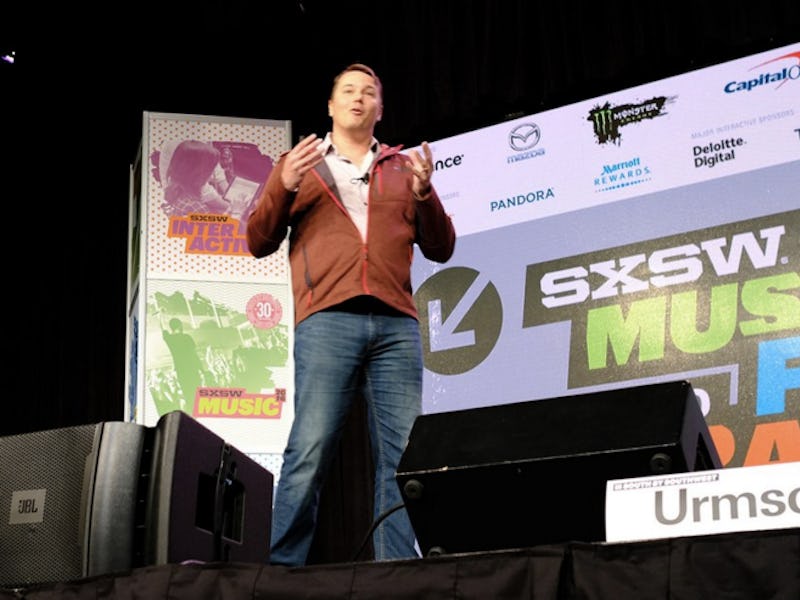Google Self-Driving Car's Chris Urmson: "We're Going to Have Worse Days" Than Bus Crash
Accidents will happen on the road to Google's vision of a self-driving utopia.

Google’s driverless car program has always attracted scrutiny, but if it’s feeling particular heat that’s because a Lexus autonomously crashed into a California bus in February.
“That was a tough day for us,” said Chris Urmson, director of Google’s self-driving car program, on Friday at the South By Southwest conference in Austin, Texas. During his afternoon keynote, he was both optimistic and frank about driverless cars.
To hear Urmson tell it, the future of Google cars is bright: Looking down the line, driverless cars aren’t 3 or 30 years away but a mixture of both, as autonomous aspects are gradually rolled out. Urmson envisions a time when cars aren’t the vehicles they are today but akin to rooms, where we can watch movies and sleep. (That we will be able to sleep behind the wheel is controversial among some robotics experts.)
Pedestrians (orange) play Frogger in front of a self-driving car.
It is also bleak. “Almost certainly, we’re going to have worse days” than the crash on Valentine’s Day, Urmson said. He will be going in front of Congress on Wednesday as part of a push to keep lawmakers abreast of the evolving technology. No doubt the February fender-bender will be fresh in legislator brains.
The bus crash was a scenario in which the car made a decision, the bus driver made a decision, and the conclusions were different, Urmson said. He chalks it up to underestimating the bus driver’s abilities. Google returned to the scene and checked how it would have played out had its car stayed put. “He would have passed our car with less than a foot of space,” Urmson said.
A Google car "sees" up to 200 meters away, and makes a prediction 10 times per second.
To defend the decision-making abilities of the Google car, Urmson speaks proudly of an incident where a cyclist on the wrong side of the road almost runs into a vehicle. At the same time, there was another cyclist traveling near the car, other drivers, and a pedestrian. But the car, able to track all the elements, was able to stop in time — unlike any of us, the not-so-subtle implication went. “I am convinced I would have hit him,” Urmson says. “I can’t shard my intelligence.”
Driverless tech is constantly evolving, because of the millions of little decisions to be made while on the road. The bus crash isn’t the only weirdness a Google car has witnessed: A woman in an electric wheelchair chasing a duck through the middle of the road, a shirtless guy running up to inspect it, people playing Frogger in front of an autonomous vehicle. “Thank you, Austin,” Urmson said, “for keeping it weird.”